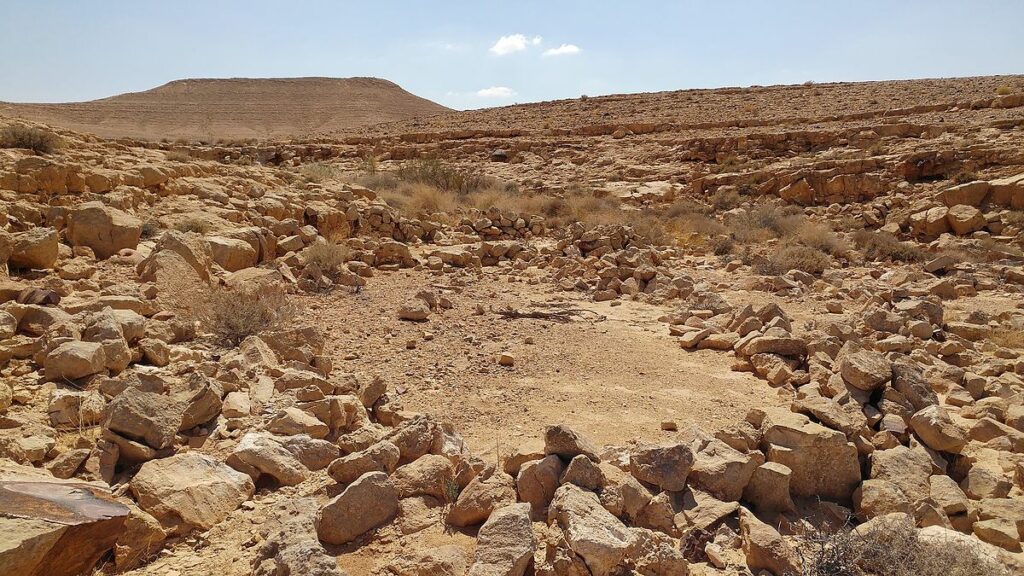Har Karkom as Mount Sinai

A flat, plateau-shaped mountain in the Negev Desert is Biblical Mount Sinai, according to Emmanuel Ananti, Italian Archaeologist and Director of the Centro Camuno di Studi Preistorici. The mountain, Har Karkom, has been under study since approximately 1980, and Ananti is fully convinced that this is where Moses and the Israelites traveled after fleeing Egypt.
According to Ananti, this site was a major center of religious activity during the 23rd to 20th centuries B.C. His studies have led him to see a great deal of overlap in points of contact with ancient Egyptian literature and the Biblical accounts.
As already stressed by several authors, the Egyptian literature of the late Old Kingdom and of the First Intermediate period between 2300 and 2000 BC shows many points of contact with the biblical narrations. This aspect has been discussed in detail in the book The Mountain of God. Another Egyptian text related, in the known versions to the 20th century BC, the Sinuhe narrative, clearly has much in common with the biblical story of Moses, who escaped to Midian where he “married” into the family of Jethro. It is difficult to believe that these parallels can be a series of pure coincidences.
Around Har Karkom, Anati claims to have found over 40,000 religious rock art paintings, 12 pillars by an altar, a small cave on the mountain, and the remains of ancient temples indicating this site’s religious significance in antiquity.
He states that when Moses traveled to Midian and tended to Jethro’s flocks, that Moses took the flocks near the Mountain of God, and that particular name for the Har Karkom indicates that well before the Exodus its religious significance was known in the region.
Anati also places the Exodus much further back in time, all the way back to the 20th century B.C. The two most generally-accepted dates for the Exodus are around 1250 BC and 1450 BC.
He has encountered a great deal of cultural and scholarly resistance to his theory. The traditional site in the southern Sinai Peninsula is frequently accepted with little question, and the idea that it may be somewhere else is not even a valid consideration for many people.
“Everybody knows that Jebel Musa is Mount Sinai, there is no reason for discussing the matter,” one told him. Another said, “Since the site of the Burning Bush is at St. Catharine, the mountain cannot be far away.”
Scholars have also resisted the Har Karkom theory. Anati claims that one well-known Biblicist told him “I have been teaching for thirty years that Mt. Sinai is Jebel Musa. How would one expect me to change my position at my age?”
Anati has compiled his research onto his foundation’s website HarKarkom.com where he details his evidence for Mount Sinai at this mountain.
Proponents
Emmanuel Anati, Head of the Har Karkom Archaeological Survey and Director of the Centro Camuno di Studi Preistorici
Last updated July 31, 2019.
